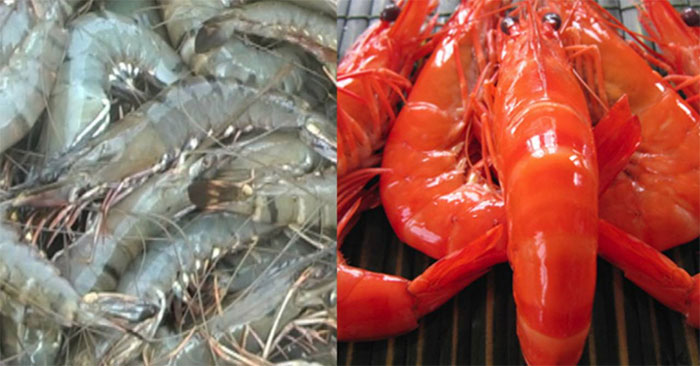Why do shrimp and crab shells turn red after cooking?
The cause comes from a chemical compound called Astaxanthin found in the shells of shrimp, crabs and some clams. Astaxanthin is an orange-red pigment, belonging to the Carotenoid chemical group, which is a substance with antioxidant effects.

When shrimp and crab are alive, the Astaxanthin compound, although present in their shells, is covered by another compound Crustacyanin, so its inherent bright red color is not clearly visible. But Crustacyanin is not stable to temperature. Under the effect of heat during cooking, Crustacyanin will be decomposed, causing Astaxanthin to be released and causing the shells of shrimp and crab to turn orange-red.
By observing the intensity of the red color when the shell discoloration occurs, we know when the shrimp and crab are cooked or are still 'rare'.
Another interesting fact about the animal world is that the pink-orange color of flamingos comes from eating algae, larvae, and saltwater shrimp. Flamingo food contains large amounts of beta carotene, a red-orange pigment. When a flamingo's stomach digests food, it releases Astaxanthin, which the bird's body absorbs and creates a pink color for its feathers.
In the seafood industry, to make salmon meat darker orange and clownfish skin more vivid red, salmon and clownfish farmers feed them food containing Astaxanthin.
You should read it
- Discovering tiny crab species can climb trees
- 10 ways to cook delicious shrimp porridge, nutritious baby food miles
- Two new species of shrimp are found in the Gulf of California cave
- Misconceptions when eating shrimp that many people have
- How to Saute Shrimp
- This is what happens in the stomach when you eat shrimp noodles
 The US successfully transmitted 1.6 kW of electricity wirelessly over a distance of 1km using microwaves
The US successfully transmitted 1.6 kW of electricity wirelessly over a distance of 1km using microwaves Scientists have just created the world's most difficult and endless maze
Scientists have just created the world's most difficult and endless maze You may have to 'pay a heavy price' for swishing flies and mosquitoes that land on your body
You may have to 'pay a heavy price' for swishing flies and mosquitoes that land on your body What is the heaviest weight a person can lift?
What is the heaviest weight a person can lift? Detection of the second El Nino, the impact spread throughout the Southern Hemisphere
Detection of the second El Nino, the impact spread throughout the Southern Hemisphere The world's widest boulevard with 16 lanes was completed half a century ago
The world's widest boulevard with 16 lanes was completed half a century ago